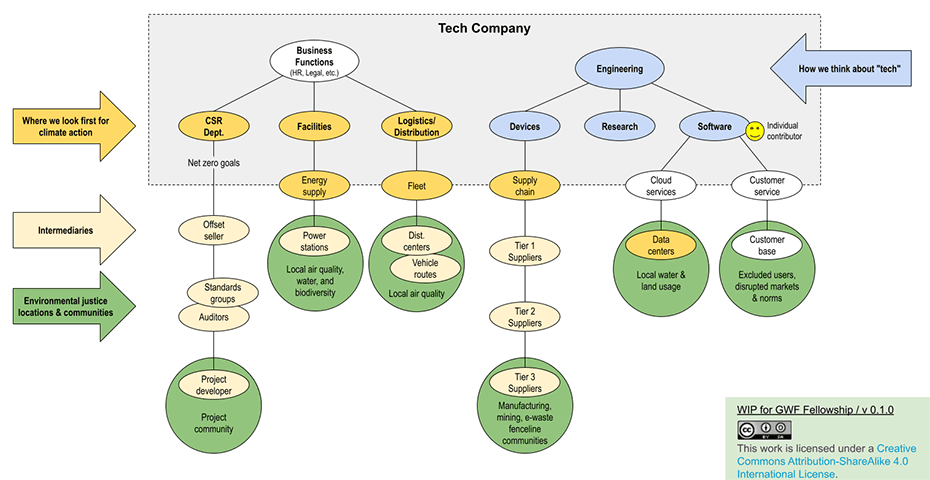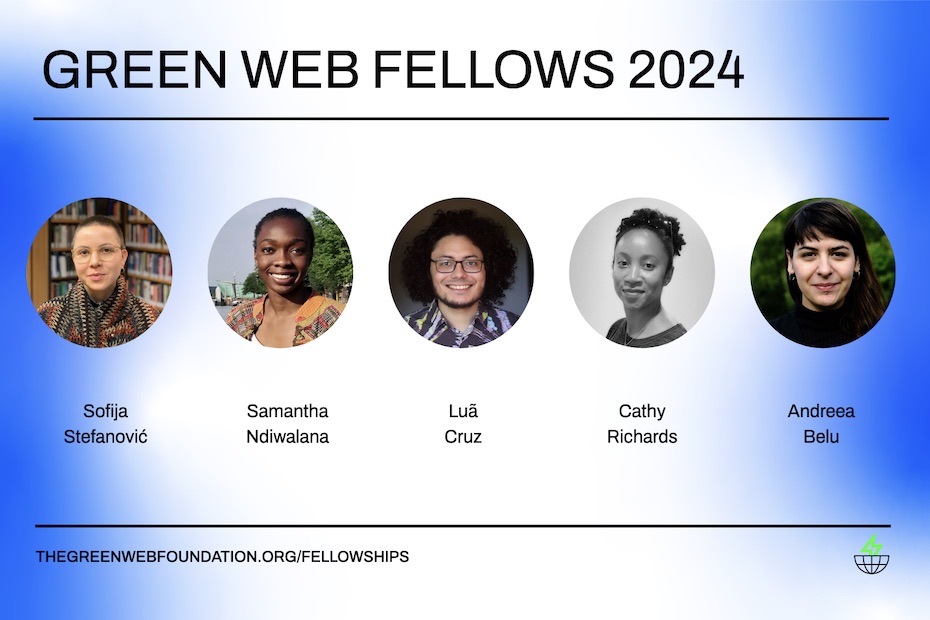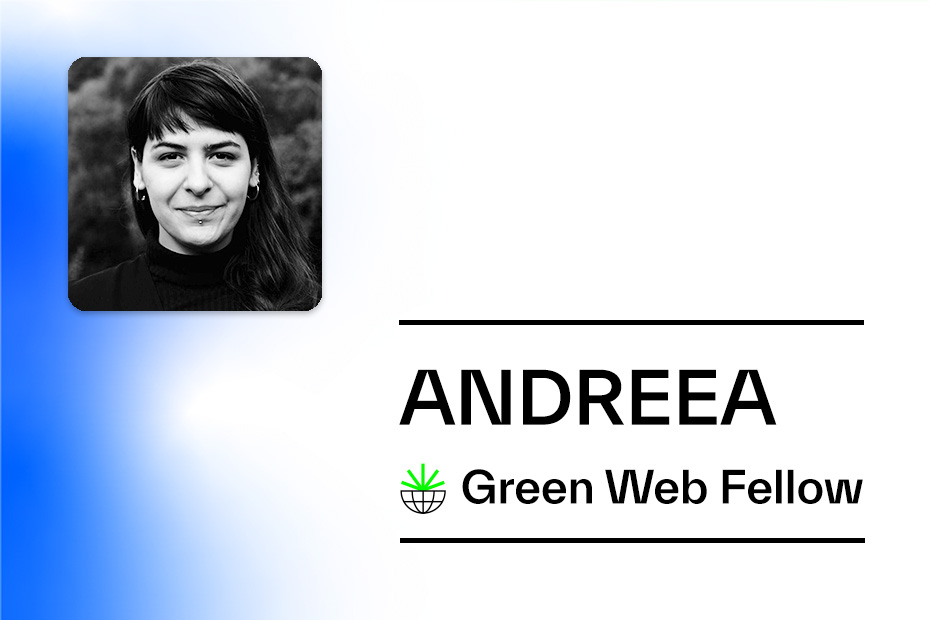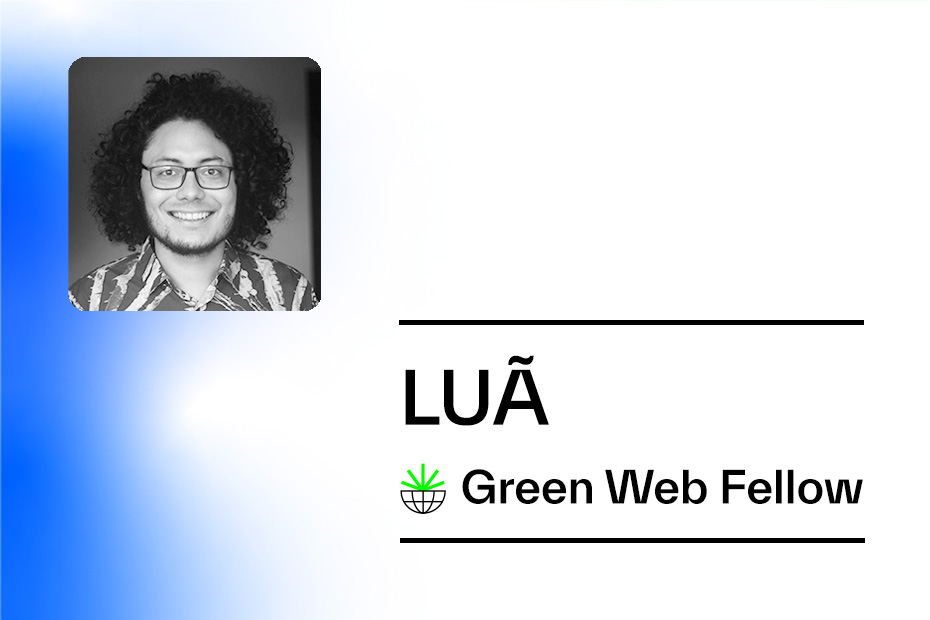Revision: This post was previously titled “Next Steps: Undefined” and was changed to its current title on 6/9/22.
TLDR: I’m currently thinking about the distance & vagueness that we* feel when we talk about making the internet “sustainable and just”. I think it’s partly a reflection of corporate structures and globalization. Often, there isn’t a direct connection between those of us who “work on the internet” and the communities that are negatively impacted by our work (see diagram). It’s ok and necessary to learn more before jumping in to take action & solve problems.
*we in this blog post refers to me and people who are similar to me socioeconomically. I started learning about climate justice and social justice in the last year; I worked in software; I have financial security and access to clean water and air; I have more digital devices than necessary, but I still really want an iPad.
What is the ONE thing I can do?
I was planning events that explore the intersection of climate justice and tech with other organizers from ClimateAction.tech and Work on Climate. Both communities have a heavy focus on application & action, and we wanted to end the events with “next steps” and concrete climate justice actions for participants to do.
The problem was, we had no idea what a climate justice action might look like for tech workers. Actions like “read more” or “find an environmental justice community organization near you” felt too vague. As we brainstormed and discarded more ideas, I became frustrated. I started to think that our approach to solving problems might be part of the problem.
Trying to find a one-size-fits-all answer ignores the fact that:
- Climate and environmental justice problems are local & specific to the community.
- The problems exist, in part, because community needs are ignored or silenced by those in power.
Finding one action to help ourselves feel like we “did something” would continue the pattern of ignoring community agency and perspective.
So how do we get in touch with the community? In our different climate justice x tech case studies, they seemed so far away…
We are here
I made this diagram to show the distance between “us” (tech workers) and where we think we want to take action. The diagram is a simplified version of a tech company that sells software and hardware. It’s based on a combination of tech org charts that I found online. (Click here for a larger version.)
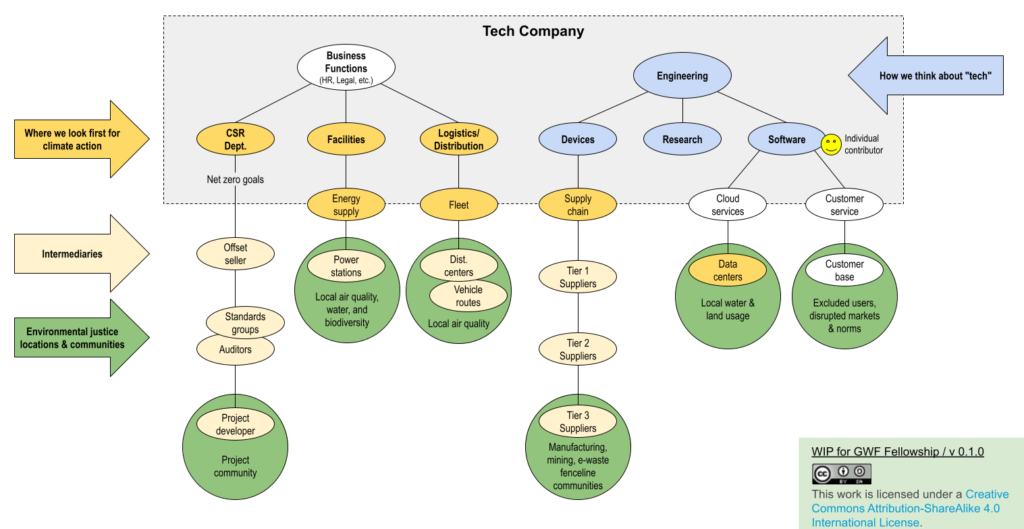
- The usual areas for corporate climate action are in gold. This includes initiatives like pledges & offsets, emissions reductions, and renewable energy purchasing.
- Communities that are impacted by the tech company’s activities are in green. For example, trucks driving in and out of distribution centers harm the local community’s air quality. Data centers use a lot of water for cooling, depleting local aquifers.
- Tech workers are the little yellow smiley face.
In this diagram, the individual tech contributor is very far removed from the conversations about sustainability and climate justice. The sustainability initiatives are often in a completely different department. It makes sense that it’s difficult for an individual worker to connect to existing corporate sustainability initiatives. And it’s even more difficult to connect to climate justice communities through the corporate structure. They’re often outside the company’s boundary and might not even have a direct relationship with the company.
Stepping back
I think that one of the first “actions” towards climate justice is to become comfortable with the fact that there isn’t an easy fix.
At the risk of trivializing the subject, let’s think about all the questions we ask before fixing a bug. We wouldn’t just jump in and start coding without understanding the problem. We would want to know about the user, what device they’re on, were they logged in, what happened before the bug occurred, what happened after, what is expected behavior, what is the desired outcome, is there a log?, etc.
We who are new to climate justice have more to learn and relationships to build, in order to make sure that we’re taking the right actions. Listening and learning are good first steps.
Back in the real world
I shared a sketch of the diagram at the next event planning meeting, and we had a confused discussion about it. In the end, we decided to ask the guest speaker broader questions about how tech workers and founders can approach climate justice.
Joycelyn Longdon, founder of Climate in Colour and AI researcher, was the guest speaker. During her talk, Joycelyn called out this feeling that our work is separate from people and climate justice. She said to think about our work holistically. She also talked about tech’s need for speed as a barrier to listening to the community. Check it out here — she gives really clear examples of how good intent without on-the-ground understanding between people can lead to harm.
And yesterday, we held an open community discussion about climate justice. The prompt was on feelings. This time, I was the one who wanted to be more action-oriented, or at least more “productive”. I wanted to learn something new, some facts & information, not feelings.
But, I’m really glad that the other organizers stuck to their ideas. We asked people to share their feelings, moved around lots of post-it notes, and listened to each other. It turns out that others are also struggling to take time to reflect on the justice impacts of their work. We opened up about doubts and vented about tech culture. We didn’t solve any problems . Our only next steps were to talk & listen some more.
Other ideas to explore from here
- Who do we pay attention to? Learning about injustice > outrage/guilt/shame > transformation
- The layered & siloed corporate structure makes accountability difficult. It also makes change difficult… Power is concentrated but responsibility is diffuse.
- “Jobs above and below the API” h/t Michelle Thorne, who also commented “Part of the tech workplace control structure is to preserve these hierarchies of tech jobs (developer vs content moderator, product lead vs warehouse fulfilment etc) but realizing what’s needed is solidarity across the supply chains.”
- Affordances: This structure “affords” injustice, which enables environmental degradation and climate change.
- What questions should we be asking ourselves about our work, our organization, and our industry?
- What other channels/methods are there for engaging with the communities that tech is dependent on? Is “engaging” even the right way to frame this? Stakeholder engagement vs community-based participatory research & other frameworks
